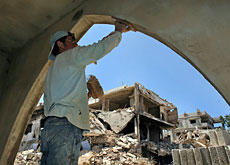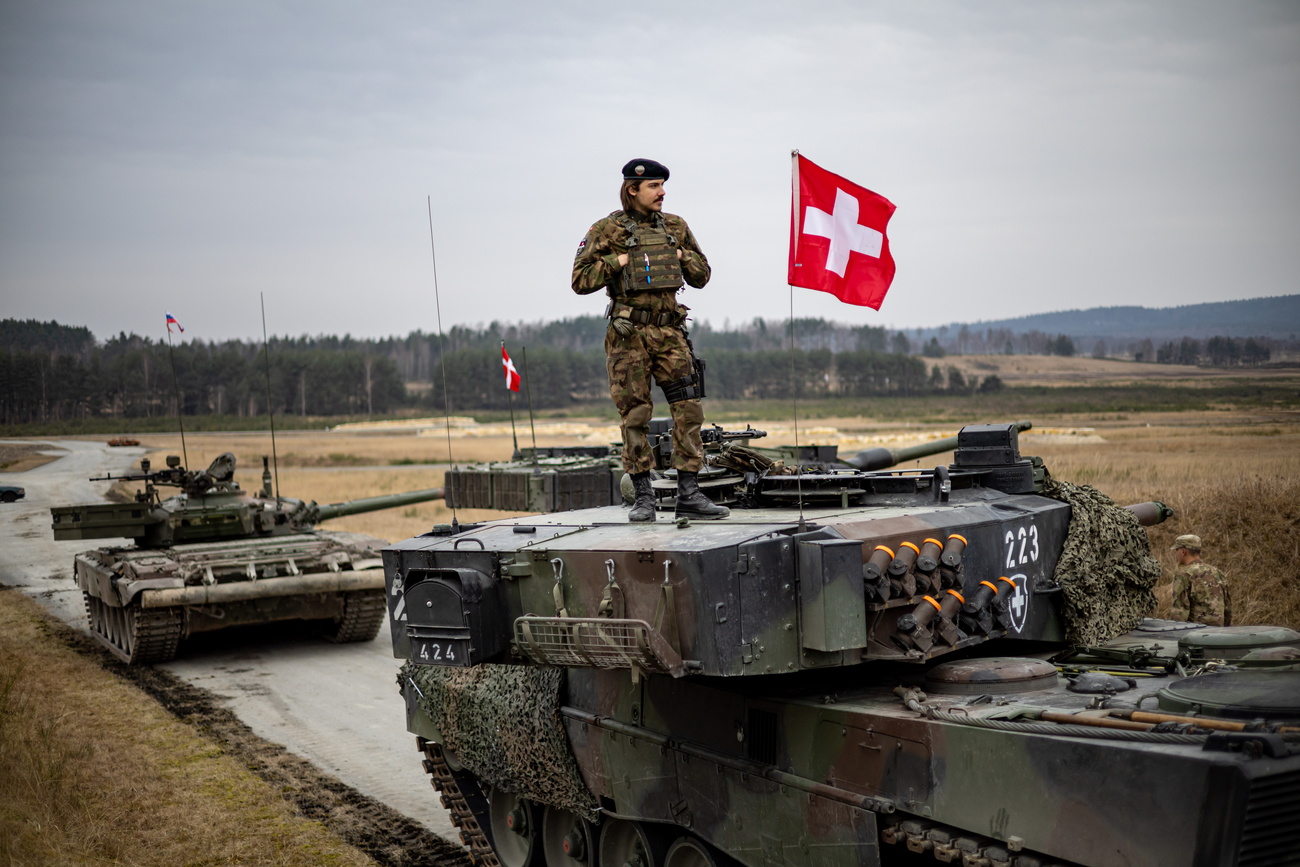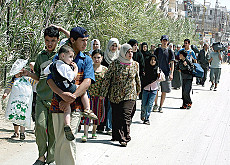Swiss call time on Lebanon relief operations

Switzerland is ending its emergency relief operations in Lebanon a year after fighting between Israel and Hezbollah militants left hundreds dead and a million homeless.
Aid officials say around 120,000 people have benefited from projects put in place by the Swiss Agency for Development and Cooperation (SDC).
“We have lent our support wherever it was necessary,” said the SDC’s Friedrich Steinmann.
Steinmann added that although the political situation in Lebanon had deteriorated over the past few months, the Swiss had been able to complete their mission.
Shortly after fighting broke out in July last year, the Swiss government released SFr20 million ($16.6 million) to aid victims of the fighting. More than half went to the United Nations and the Geneva-based International Committee of the Red Cross; the rest was used to fund bilateral aid projects.
The Lebanese government estimates that the 34-day conflict caused damage to the country estimated at between $3.6 billion and $4.4 billion (SFr4.3-5.3 billion).
Swiss relief efforts focused on the restoration of water supplies, medical assistance, repairing schools and clean-up operations along the coastline.
Six aid experts were dispatched to the region to work alongside around a dozen SDC staff already on the ground.
Financial aid
One of the projects run by the Swiss was to provide financial support for civilian victims of the conflict, such as farmers who lost harvests and small businesses.
Around SFr2.5 million was paid to the residents of seven villages in southern Lebanon to help them make a fresh start.
“We were the only ones in Lebanon who attempted such a project,” said Steinmann, who added that controls were put in place to ensure the money was used correctly.
The Swiss also helped to repair 60 schools, benefiting 21,000 children, at a cost of around SFr1 million, and contributed to the clean-up of stretches of beach between Tripoli and Enfe polluted by oil spills.
Although the SDC has called an end to its emergency relief operations, the two staff members will remain in the Beirut office. Bern is also sending an engineer to help the UN rebuild a refugee camp at Nahr al-Bared that was ravaged during recent fighting between Lebanese troops and Islamist militants.
Demining projects
The Swiss defence ministry’s mine action unit has also wound down its operations in Lebanon.
In the immediate aftermath of last year’s conflict it sent an initial SFr60,000 of demining equipment to southern Lebanon following a request from the UN.
To date the army’s mine action unit has dispatched 2,600 explosive charges for the disposal of dud munitions. A further batch of 1,300 is under consideration.
A Swiss demining specialist who helped to set up a system for mapping unexploded ordnance has now handed over to Lebanese counterparts.
The UN says at least 929 Israeli cluster bomb strikes contaminated an area of 37 square kilometres. Cluster bombs and other unexploded ordnance have killed 30 people and wounded 209 since the war.
Deminers have already made safe 122,500 of an estimated one million cluster bomblets and Markus Schefer, head of the Swiss army’s mine action unit, says progress has been rapid.
“The big difference between cluster munitions and mines is you can see the things on the ground and in trees,” he told swissinfo. “It will take a lot of work and a lot of money but it is much easier to remove them.”
Schefer, like the UN, believes that by the end of the year all “high impact areas”, such as roads, towns, farmland and schools will be clear.
swissinfo with agencies
Nearly 1,200 dead and 4,400 wounded, mostly civilians. The dead include about 270 Hezbollah fighters and 50 Lebanese soldiers and police, as well as five UN peacekeepers.
About 974,000 Lebanese fled their homes and 200,000 have yet to return. The government says 125,000 houses and apartments were destroyed or damaged. Some 60,000 foreigners were evacuated and many thousands more found their own way out.
Israeli bombing hit bridges, roads, airport runways, ports, factories, power and water networks, and military installations, as well as Beirut’s southern suburbs and towns and villages in the south and the eastern Bekaa Valley.
158 dead, most of them soldiers killed in Lebanon and including 43 civilians killed by Hezbollah rocket attacks. About 1,500 people were wounded in rocket attacks in Israel, and 450 soldiers were hurt in the fighting in Lebanon.
Some 300,000 Israelis fled their homes to escape rocket attacks on northern Israel and more than 700,000 took refuge in bomb shelters or concrete-reinforced “safe rooms”. Most of those who left have since returned.
Some 2,000 homes and apartment buildings were destroyed, another 9,000 were damaged, and some 400 businesses and schools were damaged or destroyed by rocket attacks.

In compliance with the JTI standards
More: SWI swissinfo.ch certified by the Journalism Trust Initiative










You can find an overview of ongoing debates with our journalists here . Please join us!
If you want to start a conversation about a topic raised in this article or want to report factual errors, email us at english@swissinfo.ch.